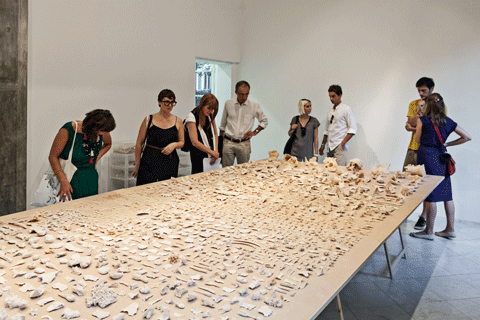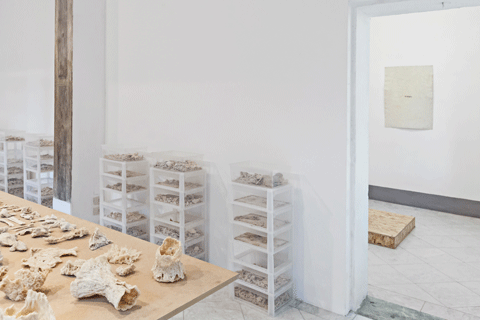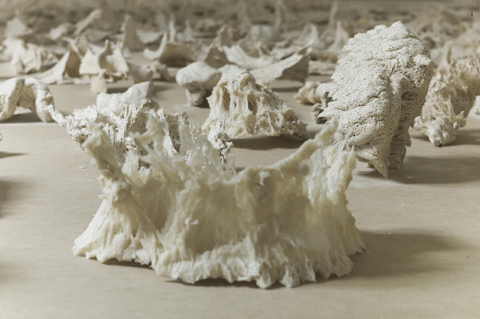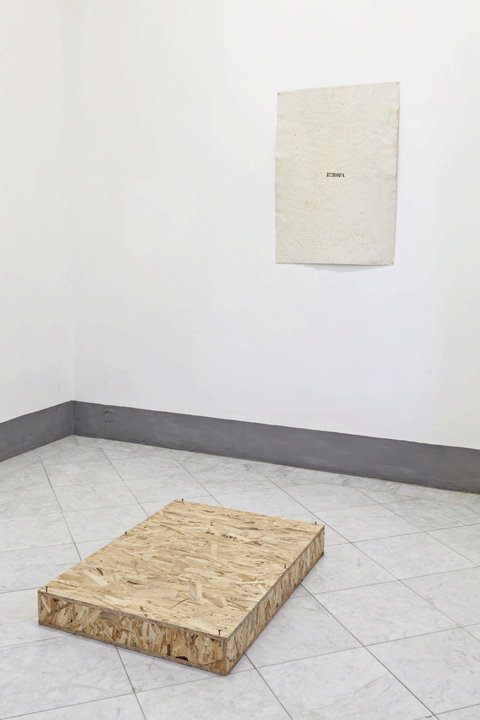Exhibitions
06 Sep 26 Sep 2014
Esthetics of Hunger
Federico Cavallini




exhibition views
Over the course of recent years, Federico Cavallini has created a vast sculptural work. At first sight, it appears to be precious archaeological finds gathered in ordinary plastic containers: bones on bones, fragile remains of unidentifiable creatures. These objects, seemingly rescued from decay and inserted into the new context of an exhibition, continue, however, to undergo a slow, inevitable process of consumption. The hundreds, even thousands of sculptures are made of water, flour and yeast – primary resources for human nutrition – attacked by flour moths. The sculptures have been eaten, burrowed into, destroyed and at the same time kept alive by the insects, the true artisans of the work's formal transformation.
Cavallini's Anatomia Companatica brings together processes of information and disinformation, aesthetic beauty and its vanishing, cultural meditation and animal activity, reduction and waste of materials. It is a paradoxical work, because it can only make a temporary stop in the art system. In 1965 the great Brazilian director Glauber Rocha theorised on and defended an aesthetics of hunger and violence in response to the aesthetic of the minority world of consumption and affluence, the world without hunger. He achieved this through the manifesto of Cinéma Nôvo: Uma Estética da Fome, the text that gave its name to the series of works in the exhibition.
The second series of works on display reproduces signs used by beggars; they are painted on paper by applying a highly liquid mix of water and flour onto which the anagrams of the words HO FAME (I AM HUNGRY) are printed. In this case, Cavallini draws on the aesthetic aspects of urban begging and of the communicative choices made in expressing a primary need, leading to an action loaded with contradictions. He wastes food to ask for food. As in Anatomia Companatica, Ho Fame attacks the aesthetics of consumption while it consumes itself on an aesthetic level. Visitors to the exhibition are invited to witness the end of the artistic form.
Federico Cavallini was born in Livorno in 1974. After completing his technical-industrial studies, he earned a degree in Medieval Art History at the University of Pisa.


